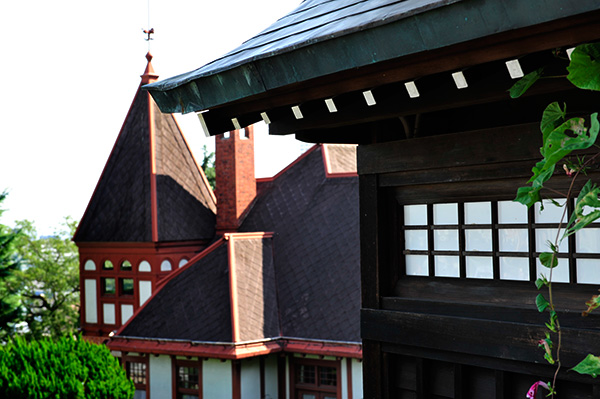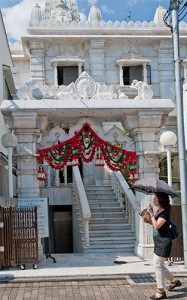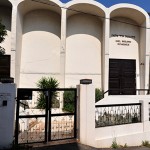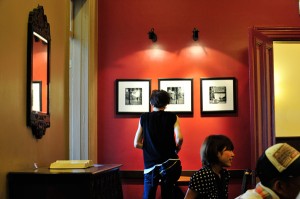
When we first explored the Kobe 神戸市 area as possibly somewhere to live when we moved to Japan, Kitano-cho 北野町 immediately struck us as a very special sort of place.

Apart from being the site of early foreign settlement at the end of the Edo Period 江戸時代, which has left its mark in the number of Western “Foreigners’ Houses”, there is a legacy also in the variety of cultures and religions that have found their home in Kitano-cho. There is a Muslim Mosque there, as well as a Jewish Synagogue and a Jain Temple. What makes this part of Kobe even more special is the fact that there are only 2 Mosques, 2 Synagogues (Jewish Temples) and one Jain Temple in all of Japan, yet Kitano-cho has one of each.

Since that time I have only briefly visited Kitano, and last Sunday was my first visit since I became owner and teacher of my English School, Smith’s School of English, Kawanishi スミス英会話川西校.
My wife, Megumi and I spent most of the day re-exploring Kitano-cho, and a very enjoyable and interesting visit it was. We really took our time and strolled through most of the area, from the lower parts near Sannomiya 三宮, up to the shrine at the top with its wonderful view, but sadly bedraggled garden (little cared for since Mrs Sato, who used to tend it, suffered a stroke – so a sign told us).
I noticed one significant change in Kitano since my earlier visits, and this probably reflects the effects of the changed economic climate throughout the world. On our first visit, there were many expensive restaurants, and few places for a snack or cup of coffee. Now there are many cafes and coffee shops, (as well as numerous new “Wedding Parlours”). There is a delightful new Starbucks set up in the Monogatarikan historic house. This is without doubt the most comfortable and beautiful Starbucks I have been in anywhere, and we really enjoyed our Iced Lattes at the end of our walk.

This lovely little corner of Kansai (although many Kobe residents claim that it is not – Kansai that is), makes me really grateful that we decided to settle and make our new lives in this part of Japan.
John
スミス英会話川西校
Leave a Reply